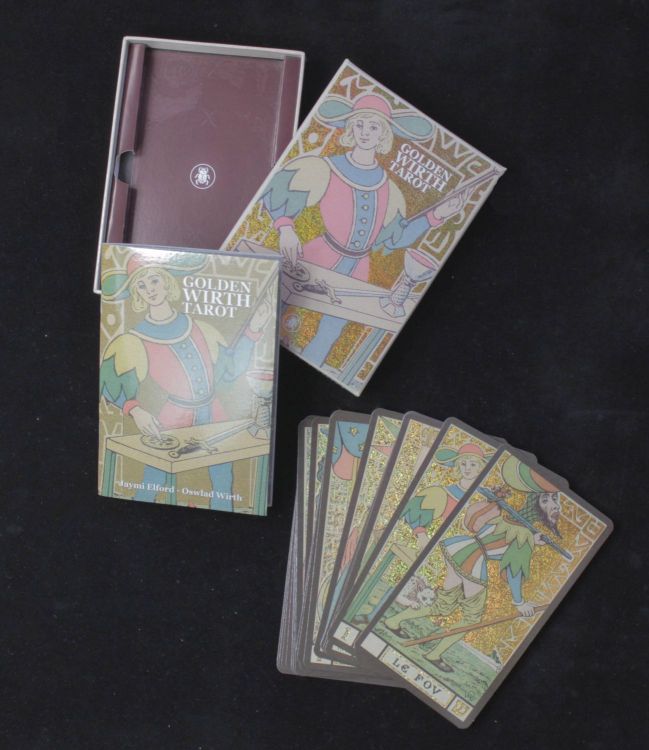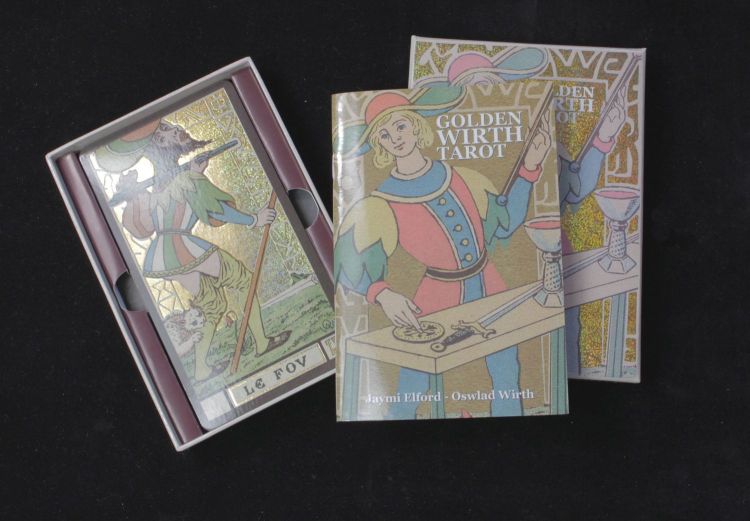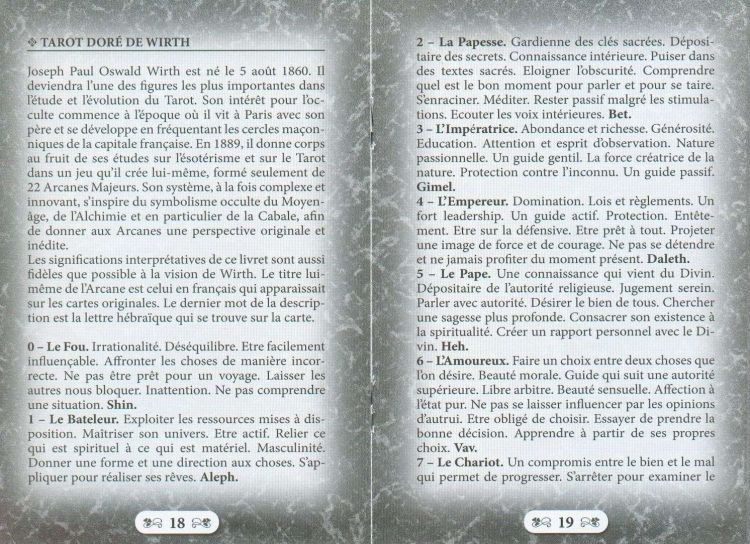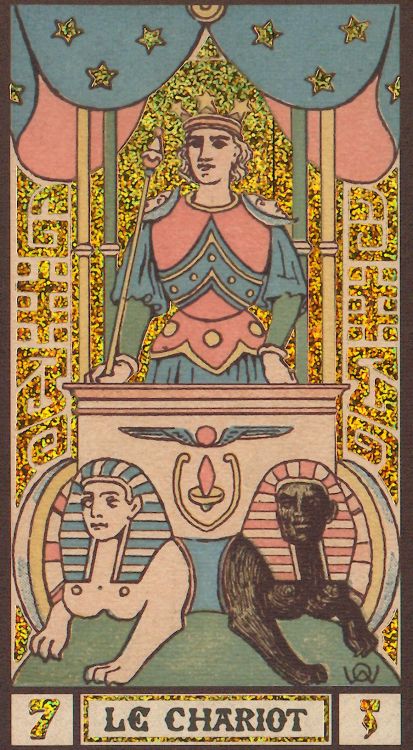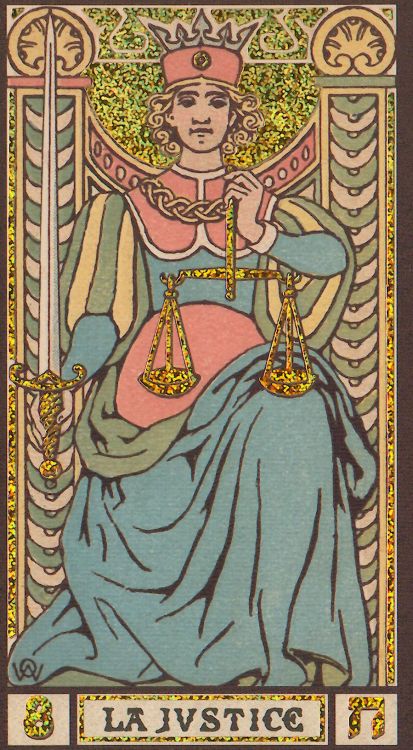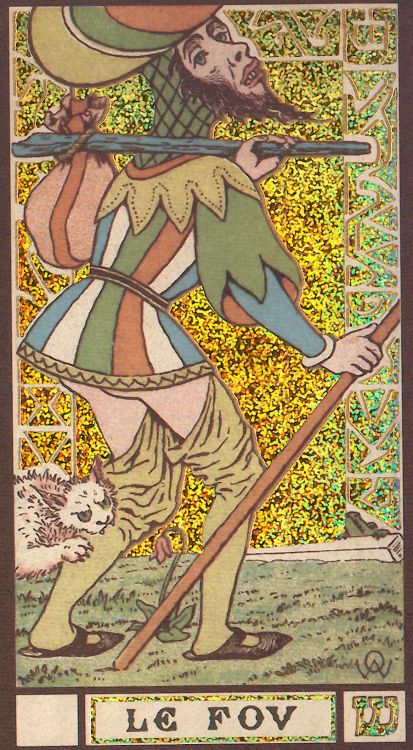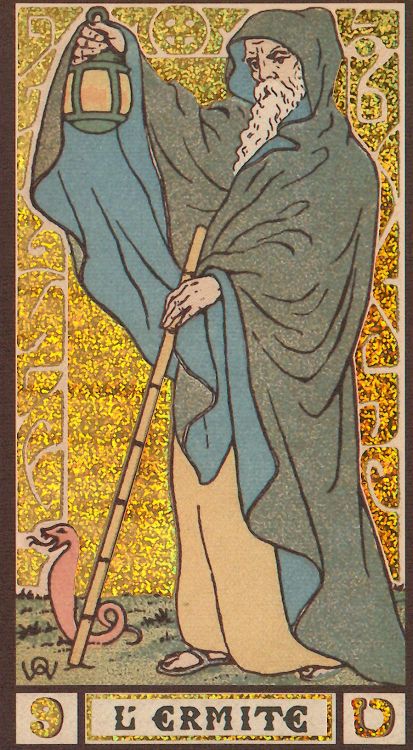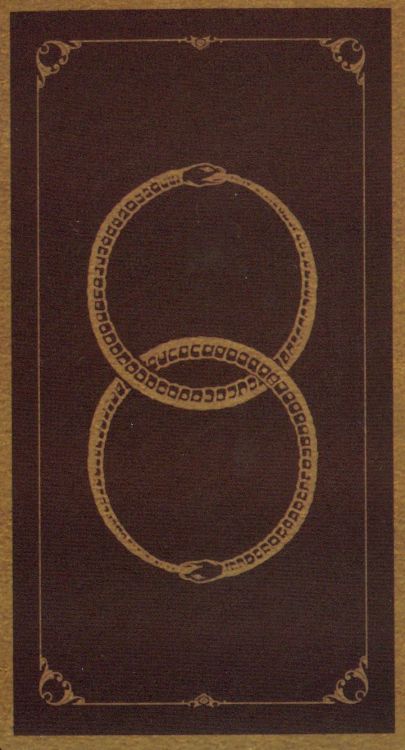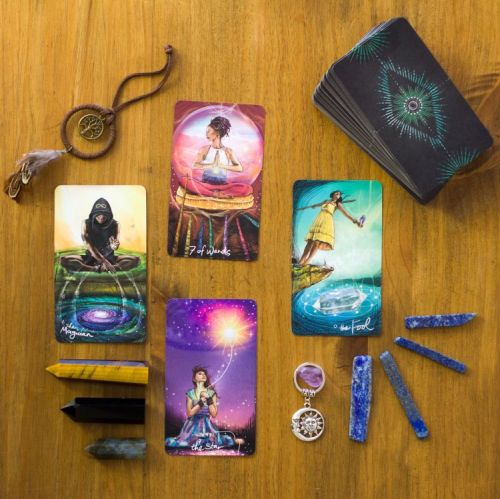The tarot of Oswald Wirth may be magnified by the work of the publisher Lo Scarabeo, but it is nevertheless a deck from another era. Wirth integrated in his tarot references to Egyptian civilization, Greek mythology, the Cabala, Alchemy, Chinese philosophy. He thus complexified the original message of the Tarot de Marseille by associating it with other cultures and traditions, no doubt reserving it for an elite capable of understanding all these symbols. Wirth's work has made the initial symbolism richer, but the Tarot has also lost part of its message because Wirth has removed certain details such as : the nonchalant left hand of the prince of the CHARIOT, the rope around the neck of the JUSTICE, the bandaged ears of the animal rising on the WHEEL OF FORTUNE, the visible foot of the FORCE, the half-human, half-animal creatures of the DEVIL, the sex jar of THE STAR, the necklaces of the children in THE SUN. Wirth removed these details making the images simpler but added esoteric details from other traditions at the same time. I'm not sure that we gain from this. Between an animal with bandaged ears and an animal with an Egyptian mask, I personally know where my preference lies.
The novice reader may be confused by the multitude of external references to the Marseilles tradition. The line and aesthetics of Wirth's images are much more modern than the medieval imagery of the Tarot de Marseille, it is true. But it seems obvious that any beginner will prefer the modernity of our current tarot cards designed on a graphic tablet.
The experienced practitioner will be able to obtain this customized version, or an original version, of Oswald Wirth's tarot to further his study of the Tarot de Marseille. Understanding Wirth's vision (and all the occultists of his time: Papus, Levi, Waite), comparing it card by card with the canonical version of the Tarot de Marseille; it means to understand the reason for the details of Marseille that can go unnoticed when compared with modern RWS tarot cards. In short, to better understand the wisdom of the Tarot de Marseille, we must compare it to others. And in this, the tarot of Oswald Wirth is a very relevant element of comparison.
To learn more and deepen your knowledge of tarot, check out my article on the meanings of the 78 tarot cards or on the 22 Trumps (major arcana).
